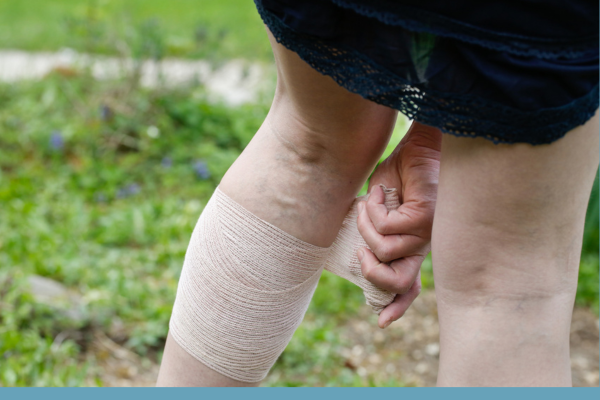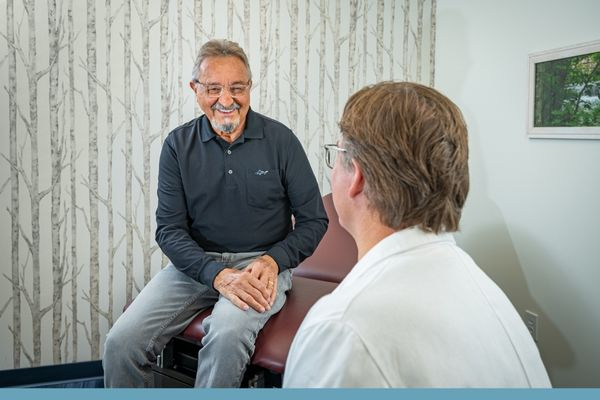Leg Ulcer Treatments
Leg Ulcer Treatment
Finding Relief and Restoring Health

A leg ulcer is more than just a surface wound. It's often a significant sign of an underlying vascular issue that needs expert medical care. At Southern Kentucky Vascular, we specialize in identifying the cause of chronic leg ulcers and providing minimally invasive solutions to help patients heal safely and effectively.

What Is a Leg Ulcer?
A leg ulcer is an open wound on the lower leg or ankle that fails to heal within a few weeks. These wounds may start small but can quickly become painful, infected, and resistant to healing if blood flow is compromised.
In many cases, leg ulcers result from chronic venous insufficiency—a condition where the veins in the legs are unable to properly return blood to the heart. This leads to increased pressure in the lower leg veins and poor oxygen delivery to the tissue, making it difficult for wounds to close.
Common Symptoms of Leg Ulcers
If you are experiencing any of the following, you may have a leg ulcer that requires evaluation:
A slow-healing sore on the lower leg or ankle
Swelling in the lower legs or feet
Skin discoloration or darkening near the wound
Itching, thickened, or leathery skin
Pain or heaviness in the legs
Oozing or foul-smelling drainage
These symptoms are often signs of underlying vascular disease and should not be ignored.
What Causes Leg Ulcers?
Leg ulcers can be caused by several conditions that impair circulation, including:
Venous insufficiency
This is the most common cause of leg ulcers. It occurs when the valves in your leg veins fail to push blood back to the heart, causing it to pool in the lower legs. This pooling increases pressure and prevents oxygen and nutrients from reaching the skin, making it difficult for wounds to heal.
Peripheral artery disease (PAD)
PAD is a condition where arteries in the legs narrow, often due to plaque buildup. This reduces blood flow to the lower extremities, starving tissues of the oxygen they need to stay healthy and heal. Without proper arterial flow, even a minor cut can develop into a non-healing ulcer.
Diabetes
High blood sugar levels over time can damage blood vessels and nerves (neuropathy). This can lead to reduced sensation in the feet and legs, so small injuries may go unnoticed. At the same time, poor circulation makes it harder for the body to fight infection, making diabetic foot ulcers a serious concern.
Obesity
Excess weight places significant pressure on the veins in the legs, which can contribute to venous insufficiency. This increased pressure can lead to swelling, inflammation, and skin changes that make a person more susceptible to developing a leg ulcer.
High blood pressure
Also known as hypertension, high blood pressure can damage the walls of the arteries over time, making them less elastic and prone to disease. This can contribute to PAD and other circulatory issues that hinder blood flow to the lower legs and feet.
Smoking
The chemicals in cigarette smoke damage blood vessels and decrease the amount of oxygen in the blood, impairing circulation. Smoking also thickens the blood, making it harder to flow through narrow vessels. This combination is a major risk factor for poor wound healing and leg ulcers.
Each case is unique. That’s why our vascular specialists begin with a thorough evaluation, including diagnostic imaging, to pinpoint the underlying cause of the ulcer.

Why You Shouldn't Wait to Get Help for Leg Ulcers
Many patients assume a leg sore will heal on its own. However, leg ulcers caused by underlying vascular issues typically worsen without proper treatment.
Waiting too long can lead to infection, tissue damage, or more serious complications—including the risk of hospitalization or limb loss in severe cases. Early evaluation by a vascular specialist in Southern Kentucky is key. The sooner we identify the root cause, the sooner we can begin treatment to promote healing, reduce pain, and protect your long-term health.
If something doesn’t seem right, don’t wait—get it checked. It can mean the difference in saving your limb, or even helping save your life.
How We Treat Leg Ulcers at Southern Kentucky Vascular
Once we determine the cause of your leg ulcer, our vascular specialty team develops a customized treatment plan focused on both healing the wound and improving your long-term vascular health.
Our goal is not only to close the wound but also to prevent future leg ulcers by restoring proper blood flow.
Treatment may include:
Compression therapy to reduce swelling and support circulation
Minimally invasive procedures, such as angioplasty or endovenous ablation
Advanced wound care, including cleaning and specialized dressings
Lifestyle guidance, such as smoking cessation and diabetes management

When to See a Vascular Specialist
If you have a sore on your leg that hasn’t healed within two to three weeks—or one that continues to return—it’s time to see a vascular specialist. Without proper treatment, leg ulcers can lead to serious complications, including infection or even limb loss.
Take the First Step Towards Healing
Call us today or request an appointment online to schedule a consultation with a vascular specialist in Somerset, Kentucky.
